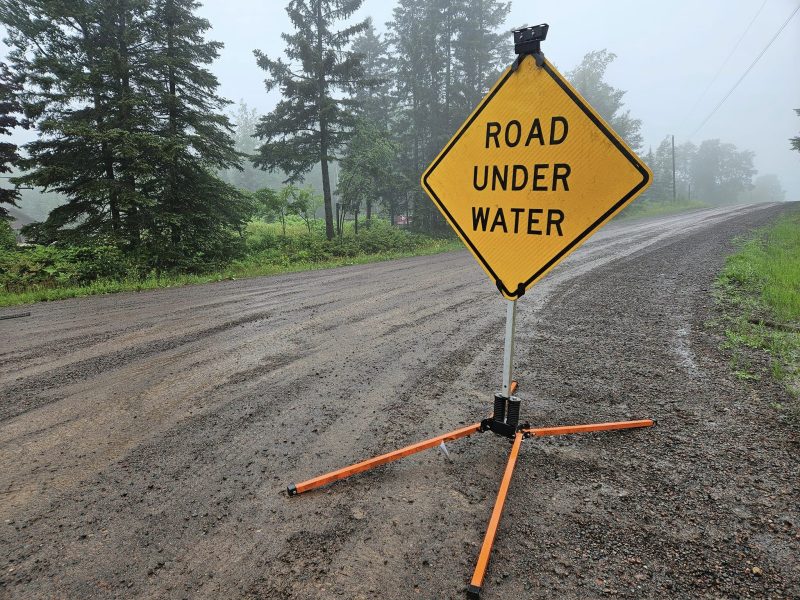Applications for FEMA assistance open for Arrowhead residents following June storms
One month after President Joe Biden approved a disaster declaration, making Federal Emergency Management Agency (FEMA) funds available to repair public infrastructure damaged during the June severe storms and flooding in Minnesota, the assistance is being extended to individuals whose homes were damaged.
FEMA announced at the end of July that individuals in 19 Minnesota counties could apply for the federal assistance. FEMA Public Affairs Specialist Kim Keblish told WTIP how residents of the Arrowhead counties (Cook, Lake, and St. Louis) can access the funds. Keblish said that in order to qualify for the federal aid, applicants must be reporting damage to their primary residence. She added, however, that both property owners and renters can apply, and that the assistance could cover a variety of costs incurred because of the disaster event.
What the assistance could cover
The heavy rains and flooding rendered some homes unlivable. Keblish said that for people who had to move, even temporarily, the FEMA funds could cover the cost of staying in a hotel or having to evacuate. She added, “FEMA may also cover, you know, the basic home repairs and home replacement, and coverage for other disaster related expenses, like moving and storage costs, primary vehicle repair replacement, child care costs, medical and dental costs, and costs, you know, to get new appliances and furniture.”
Keblish explained that the assistance is for people who are uninsured or underinsured, and that FEMA cannot duplicate existing benefits from insurance policies. She suggested that residents submit claims to their homeowner’s or renter’s insurance companies, but also apply for the FEMA assistance. When applying for the federal funds, residents will be asked to submit any insurance documents that apply to their homes, or that they have filed for the damage done during the June storms.
What the application process entails
The FEMA application will require additional documents. Keblish said that on top of the insurance documents, applicants should be ready to submit several other items. She said, “That can include the insurance settlement letter, and it can also look like home repair receipts or estimates, and proof of home ownership or occupancy of the damaged home that you reported on your application. And FEMA will also ask for proof of identity.”
After an application has been submitted, residents can expect to be contacted within 10-14 days to arrange for a home inspection. Keblish said that the inspectors are trained to evaluate what damage was sustained, even if residents have had repairs done. She said that the inspection is also an opportunity for applicants to tell the inspector their story, explaining how the disaster event impacted their home and life.
Where to apply
The deadline for applying for FEMA assistance for the June floods is Sep. 27, and Keblish said that there isn’t a cap for the total assistance that people across Minnesota could qualify for, though the general limit for what the organization will grant applicants for housing assistance is $42,000. She said that there are several ways that residents can submit their applications, including the FEMA website, and the FEMA app. She also suggested that residents looking for more detailed information about the disaster event and the process for getting assistance visit the Minnesota Severe Storms and Flooding page of the FEMA website. If applicants have additional questions about how to access assistance, they can read the FEMA helpline at 800-621-3362.
WTIP’s Kirsten Wisniewski spoke with FEMA Public Affairs Specialist Kim Keblish about how Cook County residents can access federal assistance funds following the June storms and flooding across the state.














